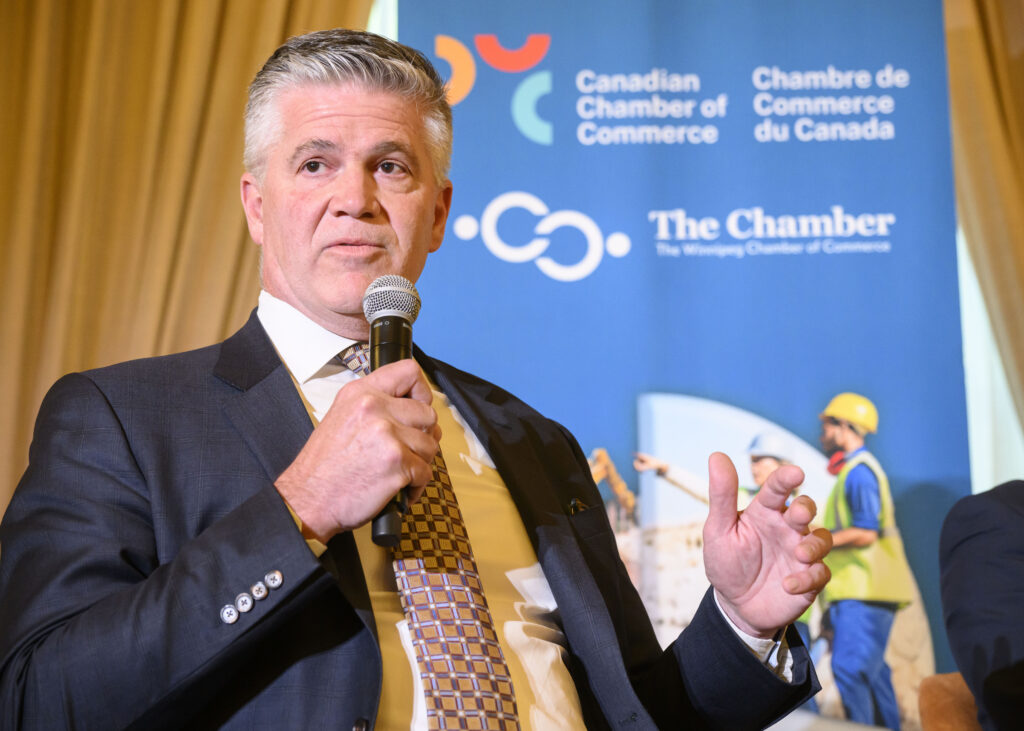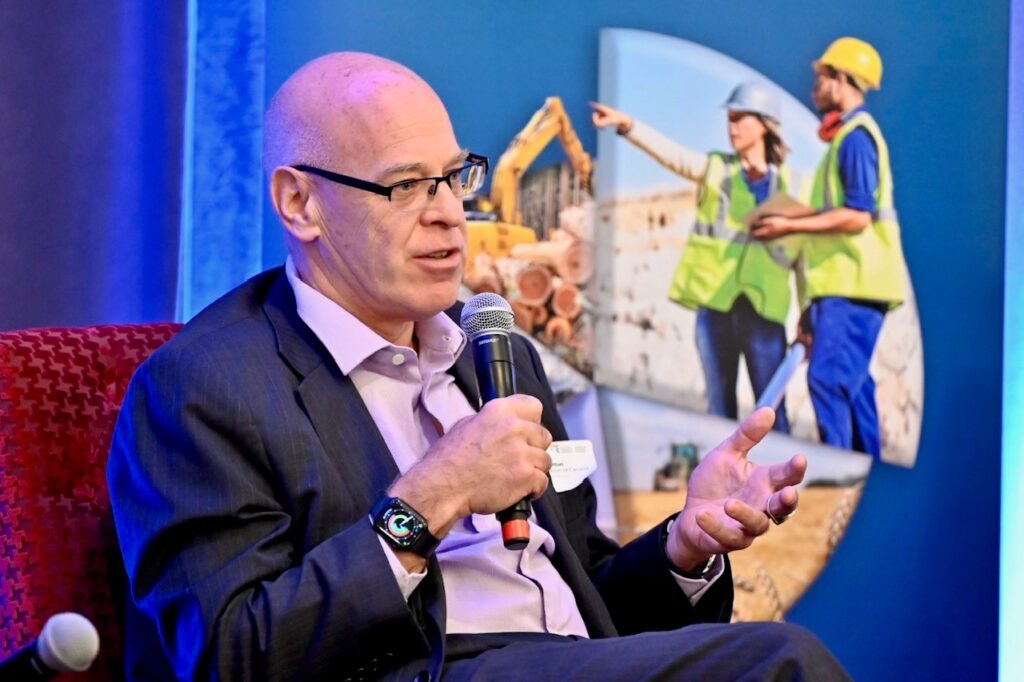Blog /
What We Heard: Key Takeaways from the Natural Resources Tour “Charting the Path”
What We Heard: Key Takeaways from the Natural Resources Tour “Charting the Path”
Industry leaders, policymakers and Indigenous representatives came together not only to confront the challenges facing the sector but also to highlight its tremendous potential for driving sustainable growth and fostering community resilience.

Canada’s natural resources sector is more than just a collection of industries; it is a key driver of our economy and a critical component of our national identity.
This sentiment was echoed throughout our Natural Resources Tour, titled “Charting the Path: Canada’s Potential as a Natural Resource Powerhouse and the Impact on Canadians”. From September 24 to October 10, the Canadian Chamber of Commerce traveled across five cities—Ottawa, Toronto, Winnipeg, Vancouver, and Calgary— sparking a vibrant exchange of ideas, insights and aspirations for the natural resources sector. Industry leaders, policymakers, and Indigenous representatives came together not only to confront the challenges facing the sector but also to highlight its tremendous potential for driving sustainable growth and fostering community resilience.
We were honoured to hear from experts such as Karen Proud from Fertilizer Canada, John Desjarlais from the Indigenous Resource Network, Pierre Gratton from the Mining Association of Canada, Jon McKenzie and Jeff Lawson from Cenovus Energy, Kyle Larkin from the Grain Growers of Canada, Linda Coady from the BC Council of Forest Industries, Jonathan Price from Teck Resources, Chris Doornbos from E3 Lithium, Jeff Gaulin from Vale Base Metals, Dr. Monica Gattinger from the University of Ottawa’s Positive Energy, David Hansen formerly from CANTERRA SEEDS, Hugues Jacquemin from Northern Graphite, Shannon Joseph from Energy for a Secure Future, and Stewart Muir from Resource Works.
View all photos per city:
Here are the key themes and takeaways that emerged from these conversations:

1. Economic Significance and Global Competitiveness
The natural resources sector is a cornerstone of the Canadian economy, contributing approximately $213 billion to GDP and supporting over 900,000 direct jobs. This sector not only ensures economic stability but is essential for Canada’s competitiveness on the global stage. Natural resources account for 50% of Canada’s exports, helping to stabilize the Canadian dollar and ensuring the affordability of imported goods. However, our natural resources compete for investment on a global stage, and in a world where capital is highly mobile, it is becoming increasingly difficult for investors to make Canada their opportunity of choice.
Next Steps: To enhance global competitiveness, balanced regulatory reforms are essential. Streamlining project approvals and providing certainty to investors will create a supportive policy framework that attracts both domestic and foreign investment in natural resources.

2. Impact on Canadians and Cost of Living
The tour highlighted the significant impact of the natural resources sector on Canadians’ daily lives, especially as Canada continues to experience rising costs of living. Beyond being a critical driver of Canada’s economy, the sector provides high-paying jobs across a range of skill levels and ensures access to reliable energy sources like oil and gas that power everyday needs. Additionally, the substantial tax revenues generated by the industry fund essential public social programs, helping to alleviate financial pressures on households across the country.
Next Steps: To address increasing costs and enhance the public’s understanding of the natural resources sector, stakeholders should prioritize public education initiatives. Clear communication about the sector’s role in job creation and energy security, and the Canadian economy is essential. Policymakers must also focus on developing frameworks that attract investment and ensure the sector’s benefits are distributed equitably for the benefit of all Canadians.

3. Indigenous Engagement and Economic Reconciliation
A consistent theme throughout the tour was the crucial role of Indigenous communities in the natural resources sector. Indigenous peoples are increasingly at the forefront of successful resource projects, demonstrating the power of collaboration in achieving economic self-determination. Projects like the Cedar LNG terminal, for instance, highlight the impact of Indigenous leadership in building community trust and meeting project timelines.
Next Steps: Industry leaders and government representatives must continue to prioritize partnerships with Indigenous communities, ensuring that their voices are central to decision-making processes. This collaborative approach not only advances economic reconciliation but also promotes sustainable development for the benefit of all Canadians.

4. Innovation and Technological Advancement
Innovation is driving progress in the natural resources sector, with advancements in sustainable practices and technology playing a key role in enhancing efficiency and reducing environmental impact. From lithium extraction for battery production to precision agriculture, the sector is leveraging technology to drive productivity and sustainability.
Next Steps: Continued investment in research and development is essential to position Canada as a leader in resource innovation. Encouraging collaboration between industry, technology companies, government and academic institutions can foster new technologies that address climate challenges while maintaining economic growth.

5. Sustainable Practices and Environmental Stewardship
Companies in the natural resources sector are increasingly committed to reducing their environmental footprint while ensuring that their operations contribute positively to local communities, to Canada and the world. Discussions around circular economy practices in mining and agriculture showcased how innovation can lead to both environmental and economic benefits.

Next Steps
Natural resource industries must prioritize sustainable practices by adopting innovative technologies that minimize environmental impact. Implementing strategies for biodiversity conservation and emissions reduction will not only help meet regulatory requirements but also enhance the sector’s reputation, appeal to investors, and align with global sustainability trends.
The Canadian government needs to expedite the delivery of the full suite of Investment Tax Credits (ITCs) to spur innovation and support major decarbonization efforts, as well as advancements in clean technology, mining, and manufacturing projects. Additionally, increasing investment in research and development (R&D) can facilitate breakthrough technologies that further mitigate environmental impacts.
The discussions during the Natural Resources Tour underscored the immense potential of Canada’s natural resources sector to not only strengthen the economy but also directly improve the lives of Canadians. From creating well-paying jobs across diverse skill levels to providing reliable energy sources and supporting public services through tax revenues, the sector plays a key role in easing financial pressures on families and fostering social equity. By addressing challenges head-on and harnessing the sector’s strengths, Canada can position itself as a global leader in resource management.
As we move forward, it is crucial for industry leaders, policymakers, and communities to collaborate effectively, ensuring that the natural resources sector continues to benefit of all Canadians. Together, we can chart a path toward a sustainable and prosperous future, using our rich natural resources to strengthen the economy and enhance the well-being of future generations.
Prior to the tour, the Canadian Chamber of Commerce’s Business Data Lab (BDL) released a report titled “Canada’s Natural Wealth: Highlighting Canada’s Strong Natural Resources Sector.” This report outlined essential recommendations for tackling Canada’s productivity challenges through strategic investment in this sector. Furthermore, an op-ed in the Calgary Herald, titled titled “Investing in our natural resources will power Canada forward,” reinforced the need for targeted investment and supportive regulatory reforms to unlock Canada’s natural wealth for the benefit of all Canadians.
Thank you to our Canadian Chamber Network co-hosts, the Ottawa Board of Trade, Winnipeg Chamber of Commerce, British Columbia Chamber of Commerce and Calgary Chamber of Commerce, for their support in bringing this tour to life.
Other Blogs

Your Business Can Help Break the Cycle of Poverty for Youth Worldwide

Shipping Disruption? Freightcom Is Here to Support Your Business





















































































